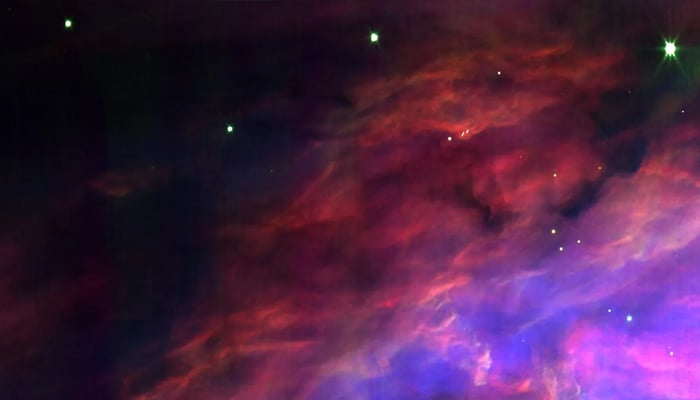James Webb Telescope unravels great detail of Orion Nebula
JWST reveals new images of closest nebula
May 20, 2024

James Webb Space Telescope brings completely different pictures of Orion Nebula which is located at a distance of 1,500 light years away from Earth.
The new James Webb images show the cloud of gas and dust called Messier 42 (M42) — material from which stars form — in bright colours.
The Orion Nebula is among the very well-studied star-forming area that can be seen with the naked eye during the dark, according to Space.com, however, the new images reveal great detail about the nearest nebula, revealing “a more complicated structure than originally thought”.
“These images have such incredible detail that we will be scrutinizing them for many years to come. The data are incredible and will serve as benchmarks for astrophysics research for decades to come," Western University astrophysicist and PDRs4All principle investigator Els Peeters said in a statement.
"So far, we have explored only a tiny fraction of the data, and this has already resulted in several surprising and major discoveries."
When the clouds of gas and dust collapse in their own gravitational weight a protostar comes into life. As they continue to accumulate mass, eventually it sparks nuclear fusion in the core.
Our sun is believed to have gone through this process around 4.6 billion years ago.
"The process of star formation is messy because star-forming regions contain stars of varying masses at different stages of their development while still embedded in their natal cloud and because many different physical and chemical processes are at play that influence one another," Peeters said.
PDRs4All team member Emile Habart from the University of Paris-Saclay said. "These images are of such quality that we can separate these regions well and reveal that the edge of the Orion Bar is very steep, like a huge wall, as predicted by theories."









